I ate at the oldest operating restaurant on the planet to see if it's a tourist trap or worth the hype

- I ate at Sobrino de Botín in Madrid, an ancient restaurant in the Spanish capital open since 1725.
- The Guinness Book of World Records calls it the oldest continuously operated restaurant on Earth.
Sobrino de Botín is famous for being the oldest continuously operated restaurant on the planet, its famous clientele, and its roasted suckling pig. But is worth the fame, or just another tourist trap?
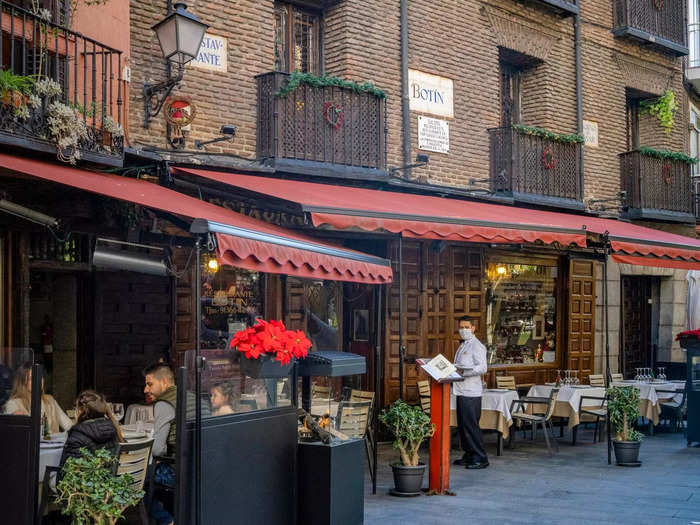
On a recent trip to Spain, I decided to make a reservation at Sobrino de Botín, or as local madrileños still refer to its original name, "Casa Botín."
Given its famous reputation, Botín is in just about every guidebook to Madrid. Aside from being nearly 300 years old, the four-floor Botín has seen its fair share of famous diners. Writers, world leaders, and visiting dignitaries have all stuck their forks in the restaurant's famed roasted suckling pig.
In the second half of the 18th century, a young Francisco Goya was a dishwasher here. Ernest Hemingway was such a regular when he was in Madrid covering the Spanish Civil War (and after), that the owners affectionately called him, "Don Ernesto."
In fact, he had a table on the second floor where he would spend hours writing at his typewriter while eating intermittent snacks from the kitchen (and drinking lots of wine, of course). Owner Emilio González once let Hemingway try to cook paella in the kitchen. It didn't go well. The chef advised him to keep his day job.
When I arrived in the neighborhood around Plaza Mayor, I took note of the street names, which are named after the profession of the people who lived on the street.
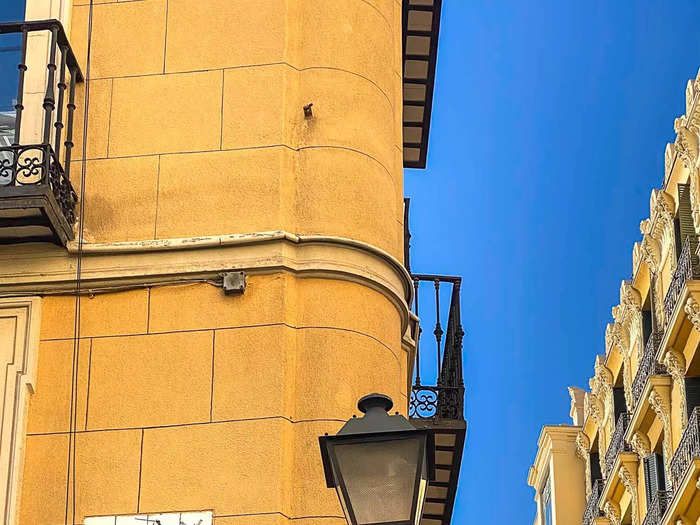
The street where Sobrino de Botín has been for the last three centuries is called Calle de Cuchilleros, a street of cutlery makers, fittingly enough. Just up the street is the ambient food hall Mercado de San Miguel.
Calle de Cuchilleros is definitely touristy.
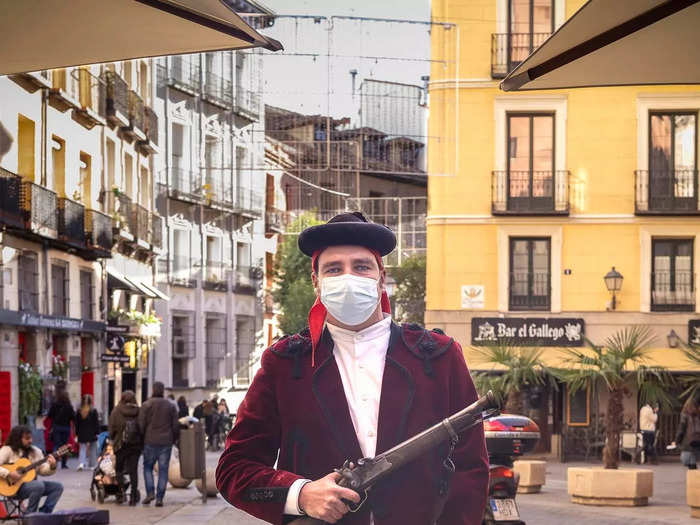
I noticed that the curved, sloped street was crammed with souvenir shops, restaurants bedecked with bright tiles, and one eatery that made its employees dress up as gun-wielding bandoleros, a historic version of an Iberian cowboy and/or bandit. There was also the occasional busker.
During the pandemic, Botín's owners, the González family, opened up Gourmet 1725 across the street from the restaurant.
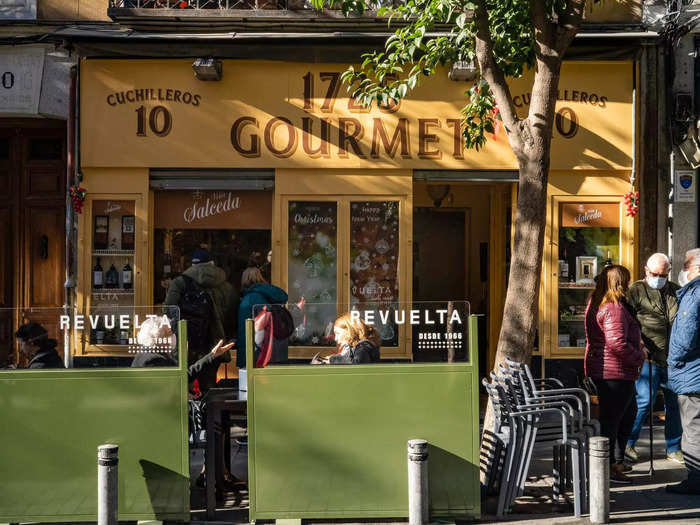
This shop allows eaters the possibility of recreating the Botín experience at home. The brick-and-mortar and online stores sell ready-to-roast suckling pig and lamb, as well as pate, cured Iberian ham, and other Spanish staples.
When we stepped inside the restaurant, my dining companion and I were whisked up to a second-floor table and given a menu by the bow-tied waiter.
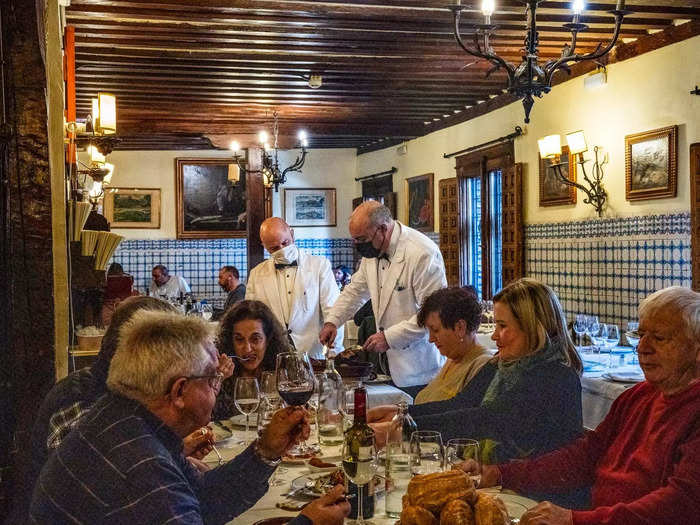
I noticed that the L-shaped room was bedecked with blue tiles on the walls and wood beams on the ceiling. It was 1:15 p.m., early for lunch by Spanish standards, and the room was about two-thirds full.
There were two Korean tourists at a table behind us and a group of seven tourists from Barcelona next to us. I could hear Spanish being spoken elsewhere in the dining room, some of whom had Madrid accents according to my Spanish dining companion.
Pepe Gonzalez, part of the family that has owned Botín since the early 20th century, told me after my meal that the ratio between tourists and locals was about 75/25, but that since the pandemic, and the fact that there are fewer tourists in Madrid, many more Madrid locals are now eating at Botín.
Hemingway had his own regular table on the second floor.
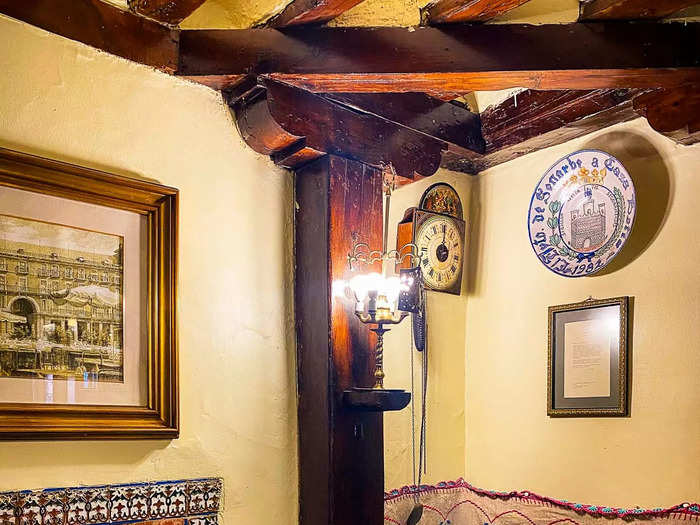
Hemingway loved Madrid, calling it the "most Spanish of all cities in Spain" (because, similar to New York City, people from all over the country have settled here) and even going as far as saying it was the "capital of the world."
He spent time on and off here in the 1920s and '30s, as well as in the '50s, and then one last time in 1960 before he died in Idaho in 1961.
"Don Ernesto" even set the end of his novel, "The Sun Also Rises," in Botín. Jake and Brett, the two protagonists, stopped at the restaurant for a meal, writing:
"We lunched upstairs at Botin's. It is one of the best restaurants in the world. We had roast young suckling pig and drank Roja Alta. Brett did not eat much. She never ate much. I ate a very big meal and drank three bottles of Rioja Alta."
My dining companion and I ordered a half bottle of Rioja Alta and scanned the menu.
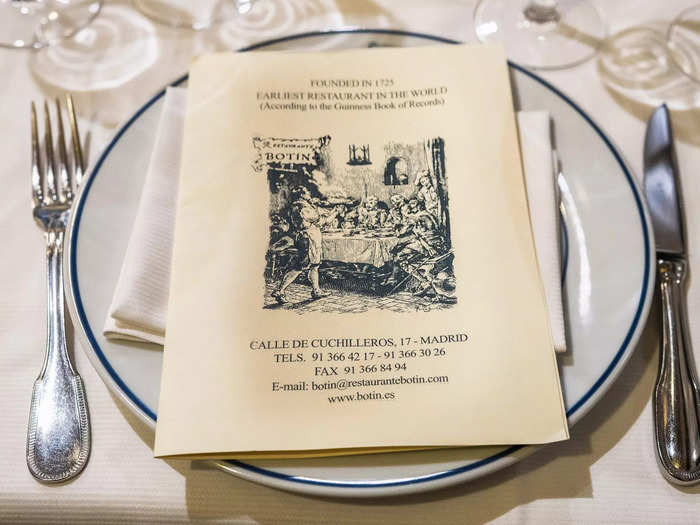
The menu is loaded with typical Spanish standards: garlic shrimp ($25), Madrid-style tripe ($18), chipirones (marinated baby squids, $25), artichoke hearts with Iberian ham ($14), and scrambled eggs with blood sausage ($14).
And don't forget about the cured Iberian Jamon, or ham, shaved off an acorn-fed pig leg for each order, for about $28. These are fighting words, but Spanish Jamon (or ham) has a much richer, deeper taste than Italian prosciutto.
We started our meal with a small portion of croquettes and black sausage.
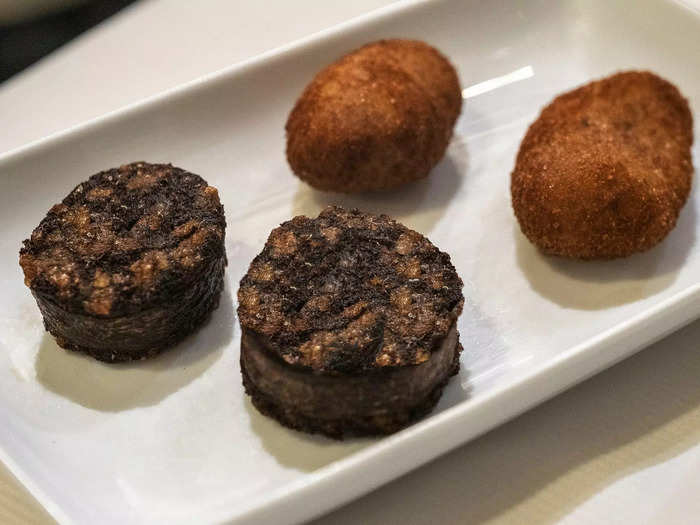
Croquettes, breaded and fried balls of deliciousness, are ubiquitous in Spain. Filled with bechamel sauce, croquettes can be flavored with salt cod, mushroom, or chicken.
The best and most common, though, is ham. And in this case, we ordered the ham. The croquettes were nicely done: crispy on the outside and gooey good on the inside.
Black sausage, or morcilla, is actually blood sausage and is often the first item made of a recently slaughtered swine. Ingredients can vary depending on where you are in Spain.
Here, the morcilla was a fairly straightforward mix of blood and fat and was very good, but not for the squeamish or non-adventurous eaters.
Next, we ordered a bowl of garlic soup, a fan favorite at Sobrino de Botín.
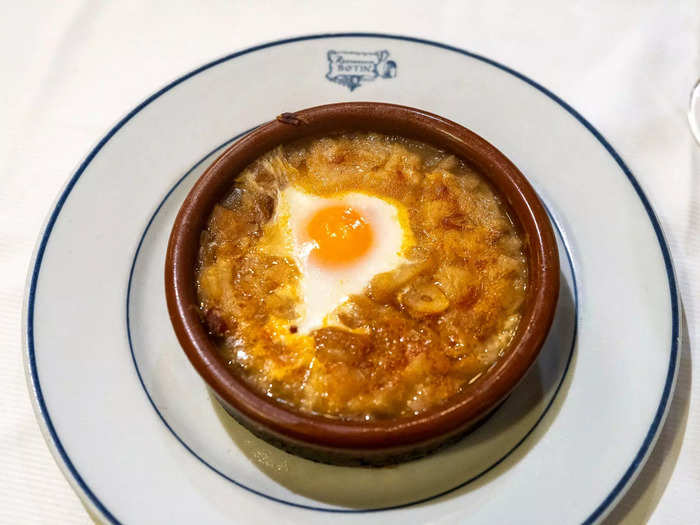
Arriving in a small clay bowl, the garlic soup — sopa de ajo — is perfect for a winter day. The thick soup, also called sopa Castellana, is studded with pieces of Iberian ham, soft pig fat, and bits of garlic. In the middle is an egg.
Chefs pour the soup into a bowl, add a raw egg, and then put the clay bowl back in the wood-fired oven for a few minutes, thus poaching the egg by the time your soup lands in front of you on the table.
The soup was hearty and delicious enough to almost be a meal in and of itself. I loved it but would skip it next time to save stomach space for the headliners: the roasted pork and lamb.
The real star of Botín is the wood-fired oven. The flame has never been extinguished since the restaurant first opened in 1725.
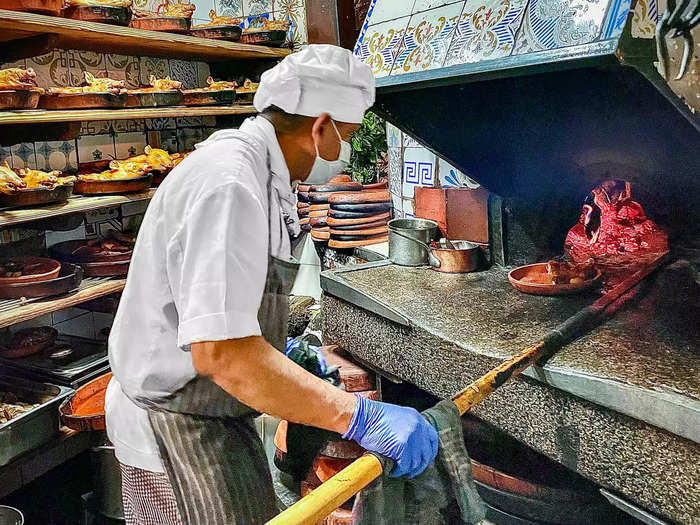
The wood-fired oven at Botín is visible to anyone heading up to the second-floor dining room. It's right next to the stairs.
Before ascending to the second floor, have a look at the chef, long paddle or peel in hand, as he pushes around the roasting pigs and lambs inside the burning oven.
The oven is as old as the restaurant itself and, apparently, the flame has never been extinguished since the restaurant first opened in 1725. With the flame always going, the chefs need not worry about getting the oven hot when they come into work the following day.
The most famous dishes at Botín come from the oven and are the cochinillo asado (roast suckling pig) and the cordero asado (roast lamb).
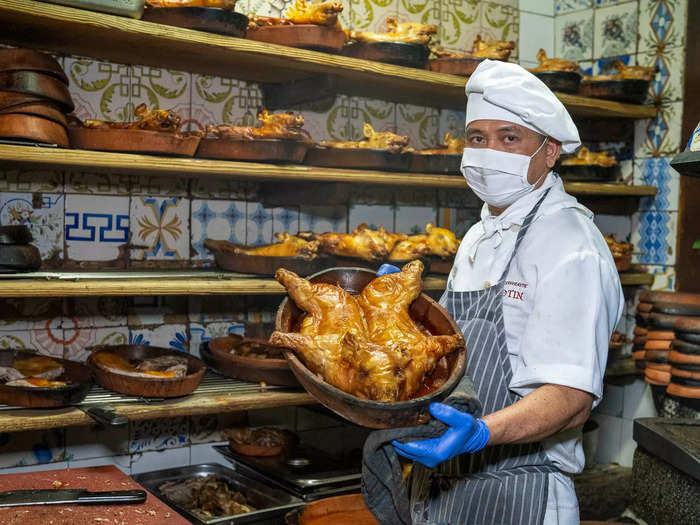
For the main course, we opted to order the things Botín has become famous for, which is the roast suckling pig and the roast lamb.
Famous, not only because journalists and celebrities have been trumpeting the dishes for generations, but because they're actually quite good.
Any first-timer (or second or third) should get the pork and the lamb. Two people could probably share one dish.
Pigs are sourced from farms in Segovia, while the lambs come from the farmland of Sepúlveda and Riaza, northeast of Segovia. The pork slow cooks in the oven for two hours and 15 minutes while the lamb cooks for about an hour and a half.
There are other restaurants in the immediate area that try to replicate what Botín does — especially the roasted lamb and pork — but accept no substitutes in this case.
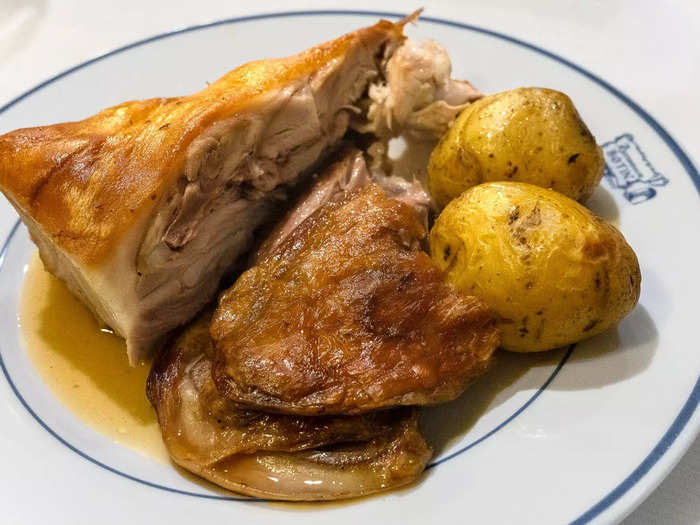
In 1935, a portion of the roast suckling pig cost just five cents at Botín. Today, diners will have to fork out $29 for this porklicious delight.
Before bringing it to our table, the waiter spooned the jus from both pork and lamb onto the meat. I couldn't wait to dig in. The roast suckling pig meat was tender enough that you don't really need a knife to tear it apart. The exterior was highlighted by crispy skin, giving way to light, juicier-than-normal meat.
The lamb belly was soft, fatty, and ultra-juicy, a slightly gamey taste eventually protruding on the palate. The meat seemed to melt when it hit the tongue. It's everything you want in a roasted lamb.
Roasted potatoes accompanied the meat but when the star of the show is this good, the potatoes felt like an afterthought, mere extras in the background pretending to talk while the A-list pork and lamb stars stole the scene.
That said, when I did get around to tasting the potatoes, they were good. And like extras, they had a function and sopped up the juice from the meat, making the spuds even better.
We finished with a glass of herbal booze
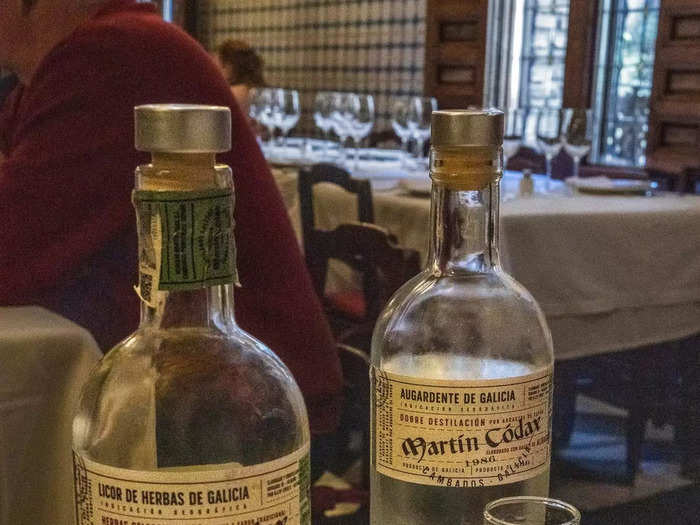
We were too full for dessert and instead opted for a digestif.
The waiter brought over two bottles of orujo, a pomace brandy made with various herbs from Galicia in northwest Spain, and poured each into shot glasses.
The green-tinted variety was double distilled and had a more complex taste than the translucent variety, which packed a potent punch in the way that rakija, the sibling spirit drunk in the Balkans, does.
My verdict? The phrase "tourist trap" doesn't really apply to Sobrino de Botín. A lot of tourists might eat here, but it's certainly not a "trap."
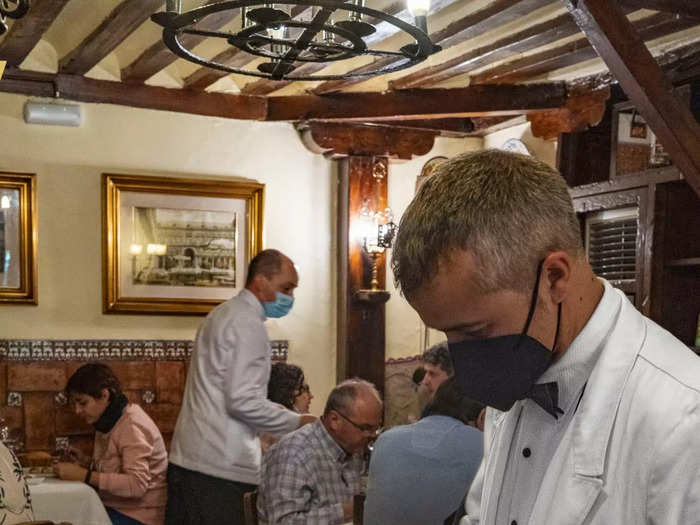
When people travel they like to eat among locals — at least most of us do — but Botín is certainly worth an afternoon grazing on roasted suckling pork and juicy roasted lamb among the tourist masses.
I loved it and would recommend coming here at least once in your life.
READ MORE ARTICLES ON
Popular Right Now
Advertisement